Professor & Chair of Embedded Systems
The Goethe University Frankfurt am Main, Germany
Professor, Lisbon School of Economics and Management (ISEG)
University of Lisbon, Portugal
Professor, Automation Systems
The Institute of Computer Engineering
Vienna University of Technology, Austria
Professor of Embedded Systems
Division for Embedded Systems
University of Siegen, Germany
Professor of Electrical and Computer Engineering
Computational Intelligence Laboratory & Department of Electrical and Computer Engineering
University of Louisville, USA
Professor of Economics and International Business
Leonard N. Stern School of Business, NYU, New York, USA
Senior Principal Scientist, ABB Corporate Research, Germany
Professor of Computing Systems
Fellow of Trinity College
University of Oxford, UK
Edgar L. and Harold H. Buttner Chair & Professor
of Electrical Engineering and Computer Sciences
University of California at Berkeley, USA
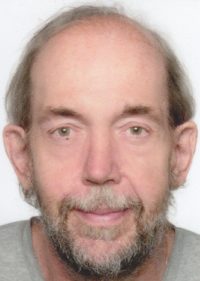
The Artificial Hormone System and the Artificial DNA: an Organic Computing approach to handle complex dynamic systems
Uwe Brinkschulte
Professor & Chair of Embedded Systems, the Goethe University Frankfurt am Main, Germany
Abstract: Embedded systems are growing very complex and dynamic because of the increasing chip integration density, larger number of chips in distributed applications and demanding application fields e.g. in cars or households. Bio-inspired techniques like self-organization and emergence are a key feature to handle this complexity. Organic Computing [1] has been introduced as a research focus to devolve such techniques to embedded systems. Its basic aim is to improve the control of complex embedded systems by using organization principles found in organic entities. This approach allows systems to dynamically adapt to changing operational conditions, realizing self-x properties at run-time. It leads to significant advantages like reduced development efforts, increased adaptability and robustness.
The artificial hormone system (AHS) [2] and the artificial DNA (ADNA) [3] have been developed as such a bio-inspired approach. They allow the implementation of completely decentralized self- organizing and self-building distributed embedded real-time systems. The ADNA represents the building plan for the system stored in each node of the distributed structure. It is inspired by the biological DNA, where the building plan of an organism is stored in each cell. Having the complete building plan of the distributed system available in each node allows to setup the system at runtime, adapt it to the currently available nodes and reconstruct it in case of system failures. The AHS manages the decentralized allocation of the components (tasks) of the building plan to the nodes. It mimics the biological endocrine system by representing hormones as short messages spread between the nodes. Antagonistic hormones form robust closed control loops. Component allocation is controlled by reaching a hormone balance. A disturbance of this balance by changes in the environment or system failures therefore is automatically counteracted. The combination of ADNA and AHS result in self-building, self-adaptation and self-healing features, which enable the creation of very robust and flexible distributed dynamic embedded systems.
[1] Schmeck, H.: Organic Computing – A New Vision for Distributed Embedded Systems. In: 8th IEEE International Symposium on Object-Oriented Real-Time Distributed Computing (ISORC 2005). pp. 201– 203. Seattle, USA (May 2005)
[2] Brinkschulte, U., Pacher, M., v. Renteln, A.: An Artificial Hormone System for Self-Organizing Real-Time Task Allocation in Organic Middleware. In: Organic Computing. Springer (2008)
[3] Brinkschulte, U.: Prototypic implementation and evaluation of an artificial dna for self-descripting and self-building embedded systems. Springer EURASIP Journal on Embedded Systems (February 2017), https://jes-eurasipjournals.
Biography: Uwe Brinkschulte received his Dipl.-Ing. degree in electrical engineering in 1982 and his Dr.rer.nat. degree in 1990 from the University of Karlsruhe, Germany. In 1993 he became professor in computer science of the University of Applied Science in Heidelberg. In 1995 he became full professor at the University of Karlsruhe. Since 2008, he is full professor and chair of Embedded Systems at the Goethe University Frankfurt am Main.
His current research interest are in self-organizing and dependable embedded systems and Organic Computing.
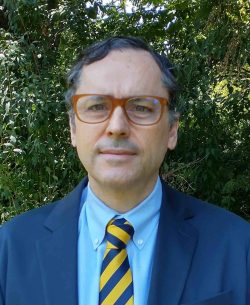
The (Ongoing) Digital Revolution: An Economics Perspective
Luís Cabral
Professor of Economics and International Business, Leonard N. Stern
School of Business, NYU, New York, USA
Biodata: Luís Cabral graduated from Stanford University (PhD, Economics, 1989) and is currently the Paganelli-Bull Professor of Economics and Chair of the Economics Department, both at NYU’s Stern School of Business. His research interests include the dynamics of firm competition, both from the antitrust and from the strategy perspectives, and has a focus on the media and entertainment industries. In addition to various journal articles, he is the author of Introduction to Industrial Organization, a textbook translated and adopted by universities in dozens of countries worldwide.
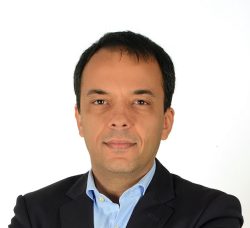
Money as Technology
Ricardo Cabral
Professor, Lisbon School of Economics and Management (ISEG), University of Lisbon, Portugal
Biodata: Ricardo Cabral holds a PhD in Economics from the University of South Carolina and is currently Assistant Professor of ISEG, University of Lisbon. His research interests include money and banking, euro area economic policy, public finance, and sovereign debt restructuring. He is the (co-)author of various research articles, as well as of a book. He has participated as a speaker in more than 80 national and international conferences for the general public. He has a weekly column in Público, the leading national daily newspaper.
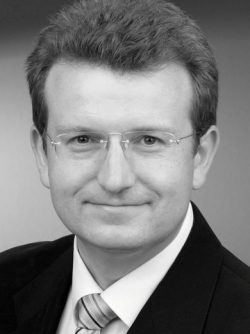
Industrial instrumentation: New physical concepts, new use cases and new practice of sensor applications
Jörg Gebhardt
Senior Principal Scientist, ABB Corporate Research, Germany
Biodata: Jörg Gebhardt received his PhD in Theoretical Physics from University of Bonn. He joined ABB Corporate Research in 1997. Main areas of his work are technology developments in industrial instrumentation and sensor system theory, e.g. in the context of process industries and power grids. Jörg Gebhardt´s scientific interests include modeling and simulation of sensor systems, especially regarding unconventional applications such as non-invasive. A concept and product which he co-authored, the ABB NiTemp Non-invasive Temperature Instrument, was shortlisted for the renowned Hermes Award at Hanover Fair 2019. Jörg Gebhardt is co-author of guidelines VDI2650 / NAMUR-NE107: “Requirements regarding self-monitoring and diagnosis in field instrumentation”. He is a member of the committee VDI-FA 1.10: “Foundations of measurement systems” („Grundlagen der Messsysteme“).
Abstract: Process industries represent an interesting field for new sensing and automation paradigms. On first sight, the market for digitalization products, i.e. for instruments and automation systems, seems to be quite conservative. On the other hand, R&D for process industries creates solutions which are proven to comply to a large number of very demanding, yet necessary, regulations. Meeting these high requirements, the solutions as well as the concepts for their development can be useful for large-scale application in other fields.
The talk will mainly present recent progress of physical sensor development which has been triggered by digitalization business cases in chemical and electrical engineering. Obviously, availability of suitable sensor solutions is often a prerequisite for usage of advanced signal processing, artificial intelligence, digital twins and cyber physical systems.
Some of the new sensor concepts also open surprising additional benefit, e.g. regarding calibration strategies. Recent standardization initiatives on customer side indicate that creation of considerable added value from digitalization may be still in its early phase.
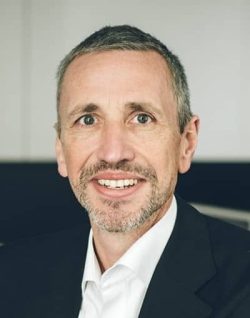
Building Automation Systems Convergence to the Internet of Buildings
Wolfgang Kastner
Professor, Automation Systems, The Institute of Computer Engineering
Vienna University of Technology, Austria
Biography: Wolfgang Kastner is head of the Research Unit “Automation Systems” part of the Faculty of Informatics at TU Wien. His research interests include but are not limited to analysis, design and engineering of distributed automation systems and their integration into Internet-based infrastructures with a specific focus on factory automation, home and building automation, and smart grids. Particular efforts of research and development are directed to automation systems and their integration into the Industrial Internet of Things (IIoT) considering the important aspects of safety and security. Various aspects for approaching the information technology and operation technology (IT/OT) convergence ─ seen from a networking perspective, but also from a semantics point of view ─ are addressed. In the area of wired and wireless industrial communication systems, his research concentrates on the analysis and further development of open standards, while for tackling the IT/OT convergence and automation systems integration approaches found in the Semantic Web are considered. Realizations of these efforts in integration and modeling are, for example, better utilization of automation systems for enhanced energy efficient operation in smart environments. Wolfgang Kastner has contributed as program committee member to numerous conferences and workshops and co-founded the IEEE Industrial Electronics Society Technical Committee for “Building Automation, Control and Management”.
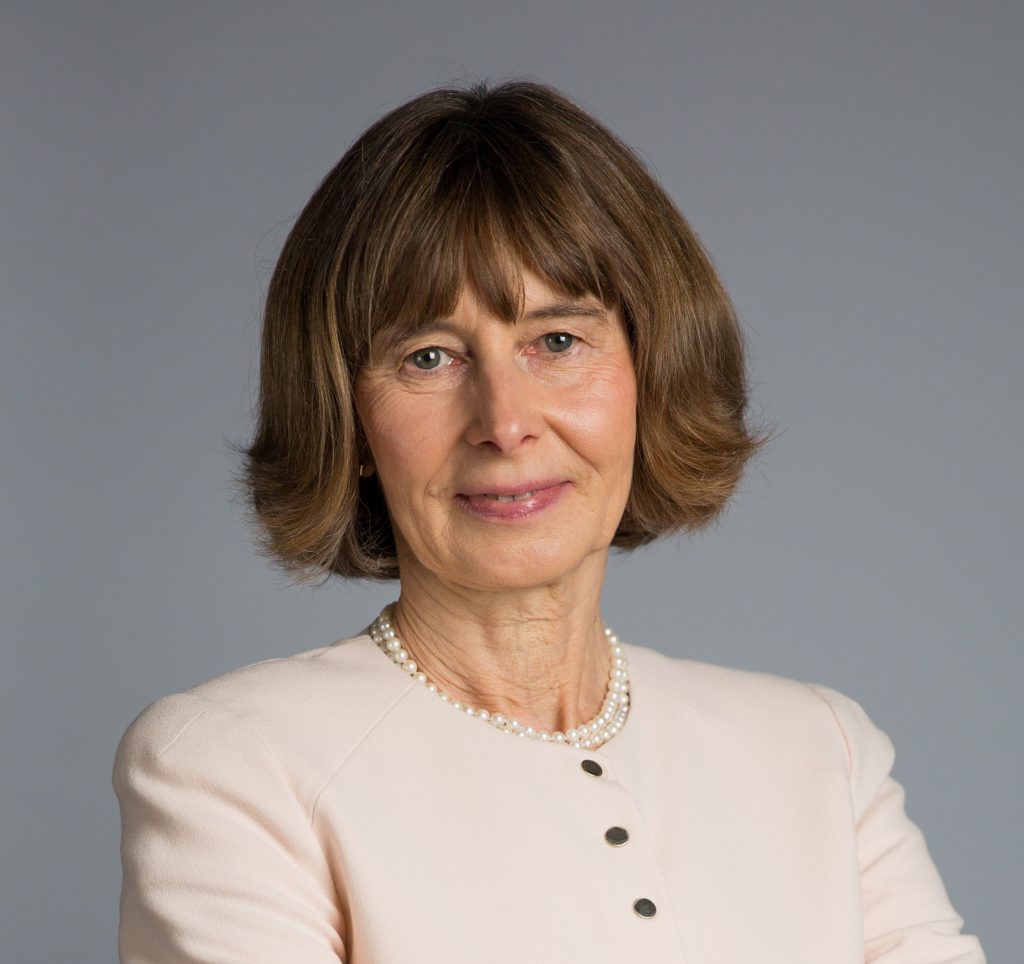
Advances and Challenges in Quantitative Verification for Adaptive Systems
Marta Kwiatkowska
Professor of Computing Systems and Fellow of Trinity College, University of Oxford, UK
Biography: Marta Kwiatkowska is Professor of Computing Systems and Fellow of Trinity College, University of Oxford. She is known for fundamental contributions to the theory and practice of model checking for probabilistic systems, focusing on automated techniques for verification and synthesis from quantitative specifications. She led the development of the PRISM model checker (www.prismmodelchecker.org), the leading software tool in the area and winner of the HVC Award 2016.
Probabilistic model checking has been adopted in diverse fields, including distributed computing, wireless networks, security, robotics, healthcare, systems biology, DNA computing and nanotechnology, with genuine flaws found and corrected in real-world protocols. Kwiatkowska is the first female winner of the Royal Society Milner Award and was awarded an honorary doctorate from KTH Royal Institute of Technology in Stockholm. She won two ERC Advanced Grants, VERIWARE and FUN2MODEL, and is a coinvestigator of the EPSRC Programme Grant on Mobile Autonomy.
Kwiatkowska is a Fellow of the Royal Society, Fellow of ACM and Member of Academia Europea.

Adaptive Context Dependent Electronic Systems for Autonomous Ground- and Air-transport Systems
Adaptive Time-Triggered Multi-Core Architecture for Context Awareness, Energy-Efficiency and Robustness in Mixed-Criticality Systems
Roman Obermaisser
University of Siegen, Germany
Abstract: In recent years the field of safety-critical embedded systems has evolved towards novel application areas that combine stringent real-time constraints, reliability requirements and the need for runtime adaptation. Adaptation is a key factor for energy management, fault tolerance using fault recovery and service degradation. Adaptation also enables the dynamic incorporation of new components into the system based on an open-world assumption. Examples are autonomous ground- and air-transport systems, Ambient-Assisted Living (AAL) systems for elderly care, networked medical devices and health management systems, applications for electrical power distribution and command/control systems. These systems are based on an open-world assumption where new components are integrated at run-time in order to dynamically realize emerging global services. At the same time, reliable operation and support for stringent real-time requirements are essential to support closed-loop control and guaranteed response times. In conventional safety-critical systems, time-triggered architectures provide significant advantages for developing dependable systems. The coordination of message exchanges is based on a communication schedule and a global time base in protocols such as Time Sensitive Networking and Time-Triggered Ethernet, thereby improving the temporal predictability, fault containment and safety certification. However, static schedules are not suitable for constructing adaptive systems that must react to context events. Adaptive time-triggered architectures offer a solution to overcome these limitations by establishing at runtime suitable time-triggered communication plans, thereby combining the benefits of predictability, fault containment and safety with the support for context-dependent adaptation. We present the Adaptive Time-Triggered Multi-Core Architecture (ATMA), which supports adaptation using multi-schedule graphs while preserving the key properties of time-triggered systems including implicit synchronization, temporal predictability and avoidance of resource conflicts. We highlight the overall architecture for safety-critical systems based on a time-triggered network-on-a-chip and time-triggered off-chip networks with building blocks for context agreement, adaptation and deployment. Context information is established in a globally consistent manner, providing the foundation for the temporally aligned switching of schedules in the network interfaces. A meta-scheduling algorithm computes schedule graphs and avoids state explosion by reconvergence horizons for context events. For each network interface, the relevant part of the schedule graph is efficiently stored using difference encodings and interpreted by the adaptation logic. Furthermore, artificial neural networks are trained with feasible schedules for different types of context events, thereby enabling at run-time the inference on schedule changes and the support for the open-world assumption. The architecture is evaluated using experimental scenarios and discussed for handling the requirements of autonomous ground- and air-transport systems.
Biography: Prof. Dr. Roman Obermaisser is full professor at the Division for Embedded Systems of University of Siegen. He has studied computer sciences at Vienna University of Technology, and received the Master’s degree in 2001. In February 2004, Roman Obermaisser has finished his doctoral studies in Computer Science with Prof. Hermann Kopetz at Vienna University of Technology as research advisor. In July 2009, Roman Obermaisser has received the habilitation (“Venia docendi”) certificate for Technical Computer Science. His research work focuses on system architectures for distributed embedded real-time systems. He wrote a book on an integrated time-triggered architecture published by Springer-Verlag, USA. He is the author of several journal papers and conference publications. He has also participated in numerous EU research projects (e.g., SAFEPOWER, universAAL, DECOS, NextTTA) and was the coordinator of the European research projects DREAMS, GENESYS and ACROSS.
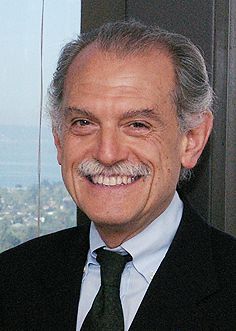
The Milano Innovation District (MIND): a living lab for Cities of the future
Alberto L. Sangiovanni-Vincentelli
Edgar L. and Harold H. Buttner Chair of Electrical Engineering and Computer Sciences
University of California at Berkeley, USA
Biography: Prof. Alberto Sangiovanni Vincentelli is the Edgar L. and Harold H. Buttner Chair of Electrical Engineering and Computer Sciences at the University of California at Berkeley. He is an author of over 800 papers, 17 books and 2 patents in the area of design tools and methodologies, large scale systems, embedded systems, hybrid systems and innovation.
Prof. Sangiovanni-Vincentelli was a co-founder of Cadence Design Systems, Inc., San Jose, CA, USA; and Synopsys Inc., Mountain View, CA, USA – the leading Electronic Design Automation companies.
Prof. Sangiovanni-Vincentelli, IEEE Fellow and Member of the National Academy of Engineering, USA, received Kaufman Award from the IEEE Electronic Design Automation Council in 2001; IEEE/RSE Wolfson James Clerk Maxwell Medal in 2008; ACM/IEEE A. Richard Newton Technical Impact Award in Electronic Design Automation in 2009; EDA a Lifetime Achievement Award in 2012.
He is also on the Scientific Council of the Italian National Science Foundation (CNR), on the Executive Committee of the Italian Institute of Technology, and Chairperson of the Comitato Nazionale Garanti per la Ricerca, Italy.
Prof. Sangiovanni-Vincentelli was awarded in 2009 an Honorary Doctorate by the combined EE and CS departments of the University of Aalborg in Denmark. In 2012, he was given an Honorary Doctorate from KTH in Sweden.
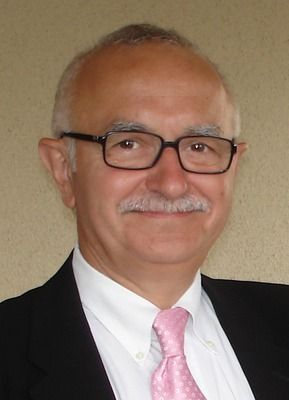
Jacek M. Zurada
Computational Intelligence Laboratory & Department of Electrical and Computer Engineering
University of Louisville, USA
Biography: Dr. Jacek Zurada is a Professor of Electrical and Computer Engineering at the University of Louisville, Louisville, Kentucky, USA. He was a post-doc at Swiss Federal Institute of Technology, Zurich, a Visiting Professor at Princeton University, and a Distinguished Visiting Professor at NUS and NTU (Singapore). Dr. Zurada was 2014 vice president, IEEE Technical Activities, and president of the IEEE Computational Intelligence Society in 2004 and 2005. He was editor in chief of the IEEE Transactions on Neural Networks from 1998 to 2003 and chaired the IEEE Technical Activities Board (TAB) periodicals committee in 2010 and 2011.
He has authored several textbooks including the pioneering neural networks text and over 420 refereed publications in deep learning, neural networks and image/signal processing that have resulted in over 11,900 citations. He has advised 22 PhD students, now leaders in academia, Google, Facebook and Amazon. He has also served industry and start-ups as a consultant. Dr. Zurada has delivered over 160 invited plenary conference presentations and seminars, including Distinguished Lectures for three IEEE Societies. He received numerous IEEE, university and scholarly society awards for research, teaching and service. He was elected to the Polish Academy of Sciences and received six honorary doctorates and professorships.